The days Brighton Tigers danced on ice as top level hockey left Albion in the shadows
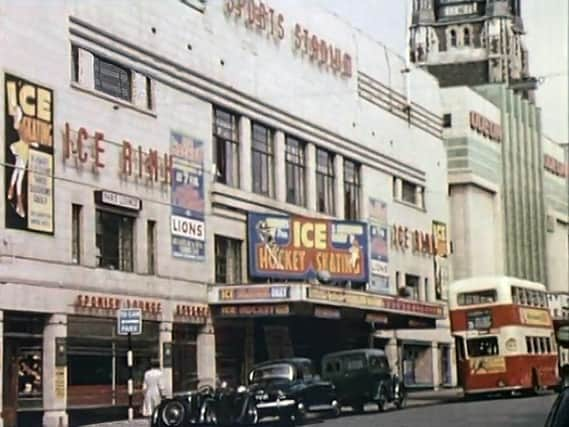

This week marks a mournful milestone in Brighton's sporting history - on 23 May 1965, Brighton Tigers played their last game.
The Tigers were an ice hockey team, one of the finest in Britain and Europe during many of their 30 seasons. They first skated into the city's consciousness in 1935 in a state-of-art building at the sea end of West Street, the Sports Stadium, fondly known as the S.S.
Advertisement
Hide AdAdvertisement
Hide AdOriginally the Swimming Stadium, the S.S. had just been bought by a group of businessmen who were enjoying success with ice hockey in London. They installed an ice pad over the pool and formed an ice hockey team composed entirely of Canadian pros. The Tigers were an immediate success and attracted capacity crowds right up until the outbreak of World War Two.
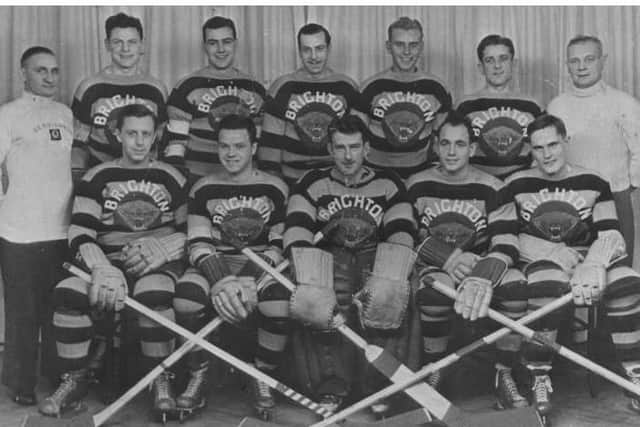

The most memorable player in those years was a skilful and handsome forward from Montreal called Bobby Lee, who would go on to become the Tigers' most prolific scorer and one of the city's most beloved athletes.
The S.S
The Sports Stadium itself was also a big hit with Brightonians and people from the surrounding towns, who regularly enjoyed a skate, an ice show or an ice hockey game, and later on, many other sports.
Though the Tigers were forced to mothball during the war years, the S.S. remained open with Canadian servicemen forming their own league, and playing in front of masses of adoring fans.
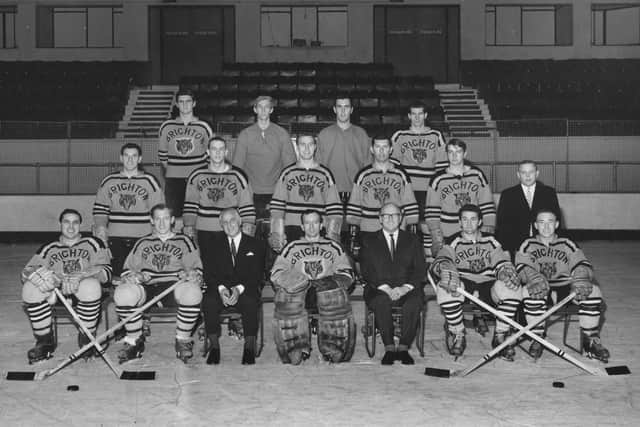

Advertisement
Hide AdAdvertisement
Hide AdMany of these men stayed on when peace was restored, a few married local women and some played for the re-born Tigers. This gave Brighton a head start when the National League resumed and the men in gold and black stripes duly carried off the league title in the first two post-war seasons.
This era introduced the fans to more players whose names would echo down the years - goalie Gib Hutchinson, who played his dangerous position on 'beer and guts', and Lennie Baker, who was capped by Britain in the 1948 Winter Olympics.
The opposition came mostly from London: the Lions and Monarchs at Wembley's Empire Pool (now the SSE Arena), the Racers and Greyhounds in Harringay Arena (demolished long ago, sadly) and the Tigers' great rivals up the A23 at Streatham.
The only other non-London club was Nottingham Panthers. The book records a group of fanatical Brighton supporters boarding a plane at Shoreham Airport in 1948 bound for Nottingham, the first sports fans in the country to fly to a sporting fixture.
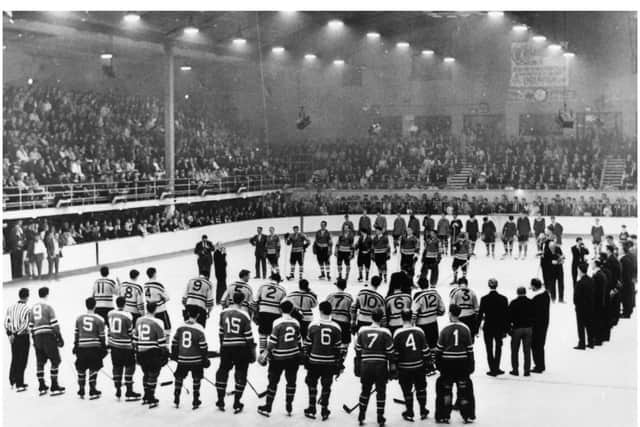

BENNY LEE
Advertisement
Hide AdAdvertisement
Hide AdNow we fast forward to the dramatic season of 1957-58. With the charismatic Benny Lee - 'the best-dressed man in town' - in charge of the S.S. and the Tigers, the team climbed back to the top of the league.
The roster now boasted a couple of gifted locals: forward Mike O'Brien, the master of stick-handling, who played in three World Championships, and defender Johnny Oxley, another member of our 1948 Olympic squad. 'Big John' set the record for most games played for the Tigers with 510.
The most important game of this and any season was Brighton's shock win over the Soviet Union. The cream of the world's hockey talent wore the USSR's logo.
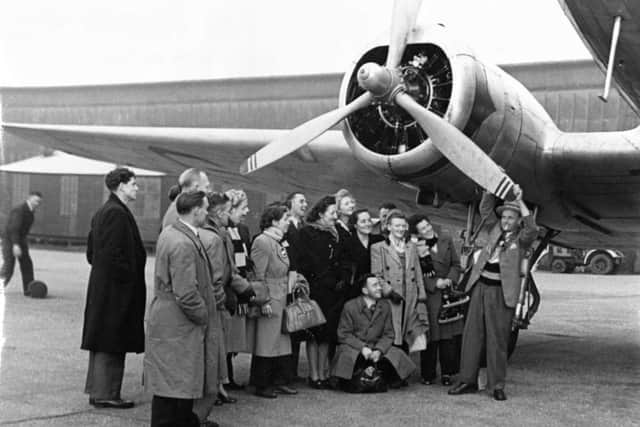

In front of an over-flowing crowd of 4,000 screaming fans and their cheerleader Charlie Connell, and helped by the small size of the Sport Stadium's ice - dubbed 'the goaltender's graveyard' - Tigers fought back from an early 3-0 deficit to beat the Red Army 6-3.
Advertisement
Hide AdAdvertisement
Hide AdThis was almost the team's last hurrah, however. British ice hockey was struggling for survival, thanks partly to the introduction of a new technology to everyone's homes - television.
But the Brighton fans loved their Tigers and continued to flock to games while Benny Lee and his right-hand man Alan Weeks burned the midnight oil putting together a schedule featuring amateur teams from Scotland and northern England.
The Tigers now had a full line-up of Brits, many from Scotland, where the game had boomed while the teams in the London arenas were being priced out.
Benny shrewdly signed several leading Scots, notably Johnny Carlyle, Jackie Dryburgh, Red Imrie, Les Lovell and Harry Pearson, who also played for their country and became icons of the Tigers.
Advertisement
Hide AdAdvertisement
Hide AdThe fans cheerfully accepted this new-look team and continued to pack the Sports Stadium until, in one of the most short-sighted moves the local authority ever made, it was knocked down to make way for - a car park!
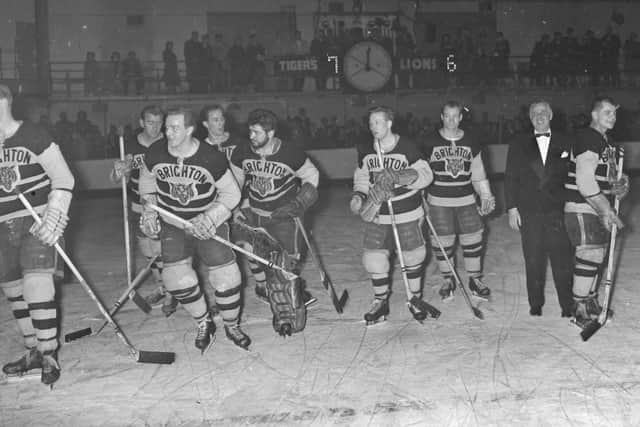

The S.S. itself was replaced by the Top Rank suite with a rink that was quite unsuitable for ice hockey.
The supporters turned their attention to finding a site for a proper replacement building. Though places in Hove, Jubilee Street and the Marina were identified at different times, the return of the Tigers seems as far away now as it did 55 years ago.
Meanwhile - before the outbreak of Covid-19 - ice hockey was thriving all over the country and Brightonians have to travel to their nearest rinks in Guildford, Gillingham or around London to watch this exciting sport.
Advertisement
Hide AdAdvertisement
Hide AdThe book, Brighton Tigers – A story of sporting passion, by Kevin Wilsher and Stewart Roberts is out now and available from Amazon.co.uk or direct from the authors at [email protected]
Foreword from Life President of Brighton and Hove Albion and ice hockey fan Dick Knight
A Brighton team of sports stars playing to rave notices at the elite level of the national league. Sound familiar?
No, this time I’m not talking about the Albion. I’m talking about arguably the fastest, most exciting and dangerous team sport in the world.
Advertisement
Hide AdAdvertisement
Hide AdA sport where only the toughest, most skilful and fleet-footed daredevils survive. The sport is ice hockey. And the team is Brighton Tigers.
When I grew up in the late 1940s and 1950s it was the Brighton Tigers who were making waves on the national sporting front. In those days the Albion had languished for years in lower Football League mediocrity, finally making it to the second level before falling back. The best was yet to come...
In my school days and early twenties, the team in gold and black was more successful – and more famous nationally - than the team in blue and white. And my attendance at the Tigers’ iconic home – the Sports Stadium in West Street - more frequent than my trips to the Goldstone Ground (mind you, Tigers did play more games per season, and I was playing a lot of football myself!)
Bobby Lee, Gordie Poirier, Casey Stangle, Lorne Trottier, Bob Bragagnola….the pantheon of Tigers’ stars – mostly Canadian and exotically named - are still as familiar to those of us of a certain age, as Albion heroes like Lewis Dunk today. (Incidentally, thank goodness Lewis never took up basketball…)
Advertisement
Hide AdAdvertisement
Hide AdMy particular Tigers favourite was the outrageously named, rugged defenceman Bob Bragagnola. When Bob ‘the Beast’ body-checked a flying winger, the opponent would smash into the boards like a speeding express train. Needless to say, Brag spent a fair amount of time in the ‘sin-bin’. He was fearless, remorseless and a great defender, a latter-day Duffy or Dunk of the ice rink.
In this marvellous compendium, Kevin Wilsher and Stewart Roberts describe the early days of ice skating in the 19th Century, the development of indoor ice rinks as more and more people took up the enjoyable and healthy pursuit, through to the growing appeal of ice hockey as a thrilling competitive sport in the early 1930s.
Never more than in Brighton, where the futuristic, state-of-the-art Sports Stadium (S.S.) Brighton, was transformed into the home of the newly formed Tigers, an attraction that became one of ice hockey’s most vibrant and popular destinations, before, after, and even during World War Two.
The authors bring to life the full fascinating story of the Brighton Tigers – the post-war glory years of national league titles and cups, the struggles to maintain supremacy, the rollercoaster seasons, and the sad decline of a team forced by circumstances beyond its control to close for ever...
Advertisement
Hide AdAdvertisement
Hide AdThis compelling tale is a must-read for all lovers of Sussex sport. The epic chronicle of a Brighton team that won national trophies at will, and thrilled many thousands of edge-of-the-seat sports fans in their all too brief 30-year era.
Quite simply, the Brighton Tigers are legends of Sussex sporting history - and they should never be forgotten.
Dick Knight